Full Belly Files: Two Ways to Report a Restaurant Article
Ditching Typical Formats to Write an Experiential Story
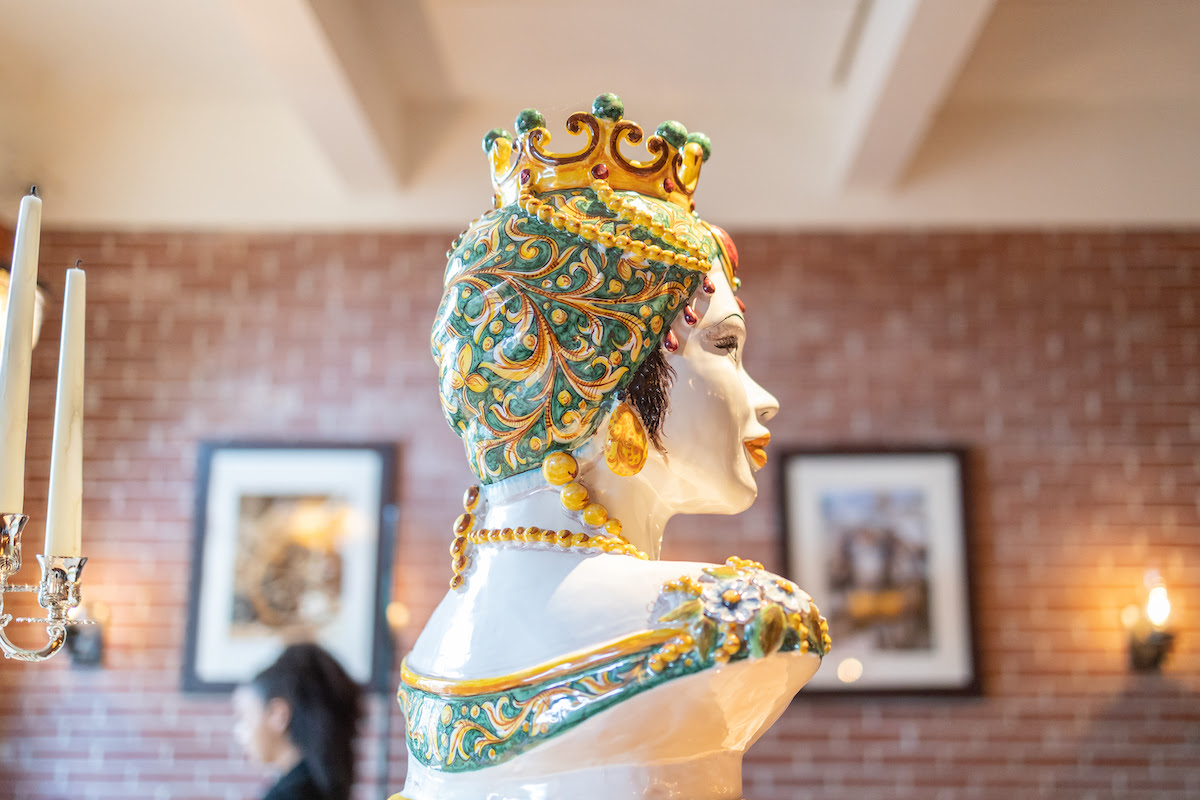
This edition of Full Belly Files was originally emailed to subscribers on April 22, 2022. To receive Matt Kettmann’s food newsletter in your inbox each Friday, sign up at independent.com/newsletters.
There are countless ways to write a restaurant article, from chef’s profiles and trend Q&As to bite-by-bite menu breakdowns, history-minded nostalgia pieces, and straight-forward business stories. But in my experience of writing about restaurants over the past two decades — I’m pretty sure my first restaurant piece was about The Brewhouse way back in the year 2000 — there are really only two primary ways that I report on them, no matter how I eventually write the article.
The first is by visiting the restaurant with notebook in hand, interviewing whoever is available as I taste through as much of the menu as I can stomach (and/or as much as they’re willing to share). The second is by interviewing the chef or owner or manager over the phone, taking extensive notes, and using their own words and biographies to shape the article.
Most of my restaurant features rely on a bit of both, though the order of the reporting varies. Sometimes I eat there first, and then enhance that experience with learning more and getting quotations in subsequent interviews. Other times I do the phone interview first to gain a solid understanding of what I’m getting into — essentially, to get the background and most of the comment-harvesting out of the way — and then visit the restaurant to run through the ingestible highlights.
But every so often, when I’ve had a great experience at a restaurant with what seems like enough information to fill a story, I won’t do the extra phone interview. That was the case in this week’s feature on Bedda Mia, the new State Street Sicilian restaurant opened (but not actually owned) by Alberto and Elaine Morello, the folks that founded and do own the nearby Olio e Limone family of restaurants.
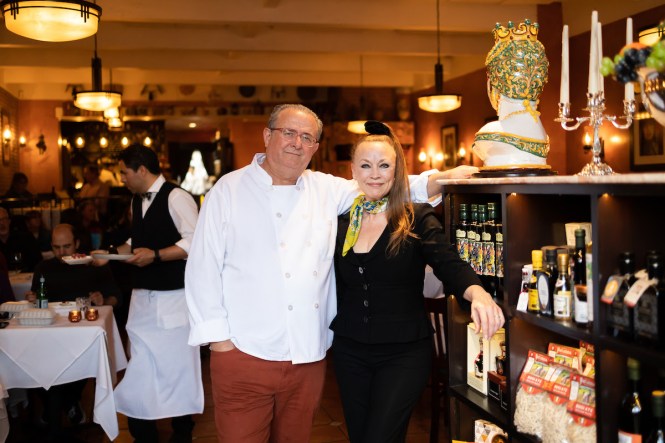
I ate there soon after Bedda Mia’s February opening with my good friend and longtime winemaking partner Giuseppe Bonfiglo, who also happens to be Sicilian.
As I describe in the article, Alberto was very excited to share everything about Sicilian culture that he’d incorporated into the space, from red coral walls to horse cart iconography to Moorish head vases. At the end of the six-plus-course, nearly four-hour evening, I told Alberto that I’d give him a ring to do more of an interview.
“What?” he said with a kind if slightly exasperated smile. “You didn’t get enough tonight?”
By the time I went through my notes last week, I realized that I did, in fact, have plenty of color, ample culinary notes (thanks in part to leaving with the menu), and just enough comments to make the story work without hassling Alberto or Elaine again. As well, we’ve told their story a few times over the years on the pages of the Indy — and even given them one of our annual-until-COVID Foodie Awards — so there wasn’t much need to rehash their personal sagas for this particular article.
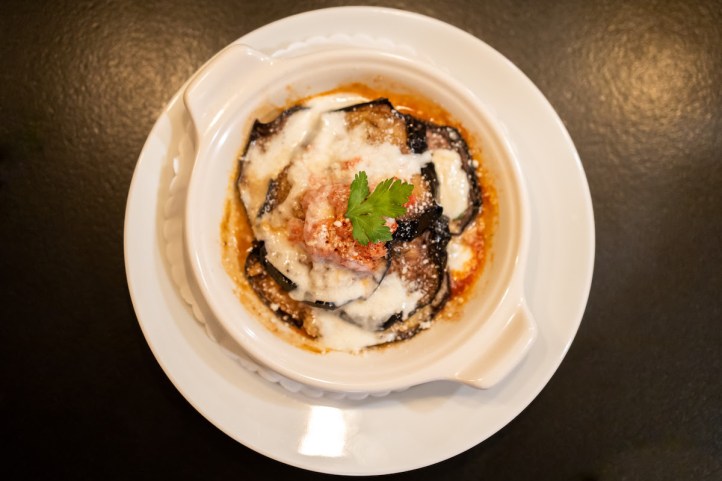
There are inherent challenges in writing a restaurant feature story without a more extensive interview. For Bedda Mia, once I transcribed what I could read out of my notebook — yea, the last C+ I ever received was in 6th grade handwriting, and it’s only gotten worse since — all I had was about 600 words of raw notes, including a handful of brief comments that would work as quotations. Compare that to what I get from an additional telephone interview: usually more than 2,000 words, loaded with many long, extended quotes. As you may predict, when just relying on the sporadic scribbling of my notebook, there just isn’t enough information to make a useful article that’s supposed to take up a full page of the paper, which usually tallies between 800 and 1,200 words.
But I felt confident with what I had transcribed for Bedda Mia, and welcomed the challenge of shaping those relative scrapes into a cohesive piece. Like any job, this one can get rote and repetitive, so solving a new puzzle is always worthwhile. And with fewer notes, I’m forced to exchange the more reliable reporter’s visor for a creativity-requiring writer’s cap in order to create something compelling straight from the experience rather than just rely on basic facts and a proprietor’s comments.
I think that worked well for Bedda Mia. Hopefully, my words convey a bit of the soul and passion that Alberto is bringing to the place. I didn’t catch the exact marinade on the swordfish carpaccio or the specifics of Alberto’s Sicilian village or the artist who crafted the centrally located vase. But the article that I wrote feels a lot like what it felt like to eat at Bedda Mia and passes along some of what we learned about Sicily as well.
As to the other way — writing about restaurants just based on interviews without a visit — I’ve done that too, but it’s pretty rare. Why do this job if you don’t get to eat too?
Sign up for Indy Today to receive fresh news from Independent.com, in your inbox, every morning.
Al Pastor in Paso & Albariño in Arroyo Seco
Because my son’s flag football games are at 8:30 p.m. every Friday night (!!!), our only choice for making it up to my uncle’s annual Easter party in Capitola (which he hosts on Saturday) was to jam up that way on Saturday, stick around for 24 hours, and head back on Sunday.
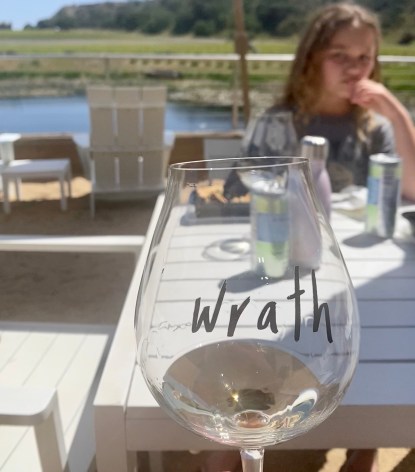
Though usually four hours or less to my mom’s house in Aptos — which is what happened on Saturday — our ride back on Sunday took us eight hours, but we were solely to blame. For once, my family actually was ready to indulge my ever-ready desire to show off the wines and tasting rooms of the Santa Lucia Highlands and Arroyo Seco, located on the western flank of the Salinas Valley between Gonzalez and Greenfield.
Being Easter, the choices were a little slimmer than usual, but we wound up at two of my favorites, both of which I’ve been reviewing and visiting myself during my eight years in charge of the Central Coast for Wine Enthusiast. The first was Wrath Wines, where we sipped on sauv blanc, chardonnay, pinot, and syrah next to the glistening pond and a Canadian goose that was mourning its lost partner.
The second was Joyce Wine Co., which was hosting the grand opening weekend for its Arroyo Seco tasting room in the old Ventana Vineyards space. We ran into Russell Joyce’s friend and consultant, the sommelier-turned-winemaker Ted Glennon, who’d just finished hand-labeling the latest batch of his own brand, Vocal Vineyards. He shared the latest Joyce releases, including a zesty albarino and herby-fresh gamay noir, always one of my faves from the fairly priced menu.

Both tasting rooms are perfect symbols of how enologically insightful it can be to visit this stretch of Monterey County. Unfortunately, because there aren’t many nice places to stay or eat in the Salinas Valley, visitation to these estate properties tends to lag. It shouldn’t be that way — this is agriculture in full action, and the tastings rooms of Arroyo Seco and the Santa Lucia Highlands provide a front-row seat.
The surprise highlight of the ride back, though, was actually in Paso Robles. The Sunday before, we’d eaten at Costa Kitchen & Bar in the Mar Monte Hotel and gone to the Billy Strings show at the Santa Barbara Bowl with winemaker Jeremy Leffert of Tooth & Nail, so we asked him for burrito advice, as my wife had been craving a bean-and-cheese version since buying artichokes in Moss Landing.
Jeremy texted back a few suggestions, but we went with La Reyna Market, located at the corner of 24th and Oak streets, just minutes from the Highway 46 East exit. Seeing a spinning trompo outside, I went for an al pastor burrito, and proceeded to chow it down in the driver’s seat before getting back on the road.
I was blown away at the flavors, the composition, the whole package, so as my family finished eating theirs, I went inside, handed the boss lady my card, and said, “I’ve eaten burritos all around the world, and this is one of the best that I’ve had in a long time.”
I’ll stand by that, and may just pop in again this week when I head back to Paso for Hospice du Rhône.
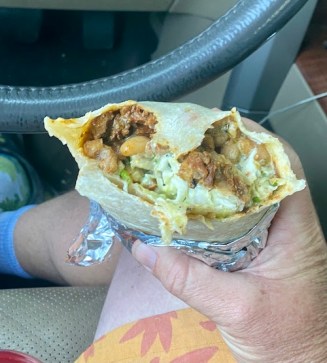
Mark Your Calendars

Here are some food & drink events on the horizon:
- Hotel San Luis Obispo just opened Region SLO, a collective tasting room, and is hosting a rosé-focused fundraiser called Rosé the SLO Way this Sunday, April 24, 1-4 p.m.
- On May 7, more than 55 craft breweries will pour at the Buellton Brew Fest in the Santa Ynez Valley. See buelltonbrewfest.com.
- Frinj Coffee, which I profiled in this cover story, will be hosting tours of its Goleta farm on May 20 and 21, 9:30 a.m.- noon. See frinjcoffee.com.
- Paso Robles isn’t known for pinot noir, but more than 25 of the region’s pinot producers will be pouring at the 17th annual Paso Pinot & Paella Festival in Templeton Community Park on June 5, 2-5 p.m. Pairing their best paellas will be 15 chefs, with benefits going to the Paso Robles Youth Arts Foundation. See PinotandPaella.com.
From Our Table
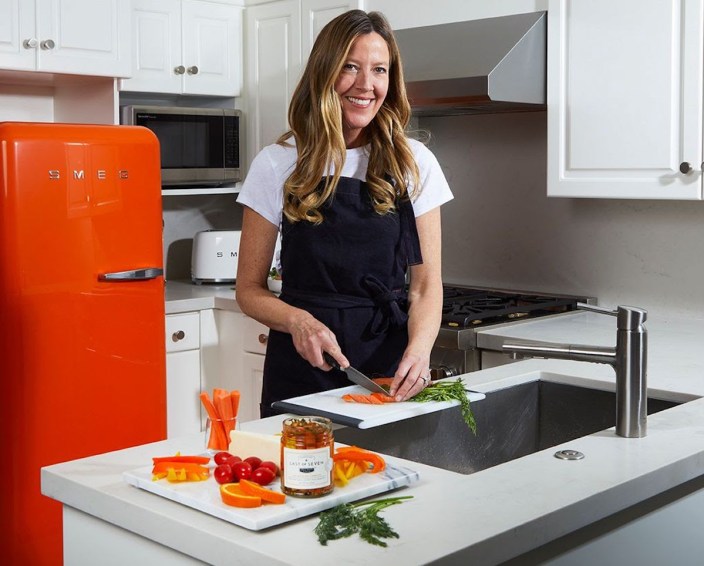
In this week’s paper:
- As noted above, I wrote a feature on Bedda Mia , the new Sicilian place on State Street.
- I also wrote a story about Last of Seven, a pickle company with Santa Barbara ties run by former high tech HR exec Elizabeth Osterman Brown. I don’t get into it much in the article, but the pickles are great. I like the spicy Japanese ones best.
- And in a case of print following this Full Belly Files newsletter, I turned last week’s report on the California Agave Council into a slightly scaled down print piece about the same thing.
Support the Santa Barbara Independent through a long-term or a single contribution.




You must be logged in to post a comment.